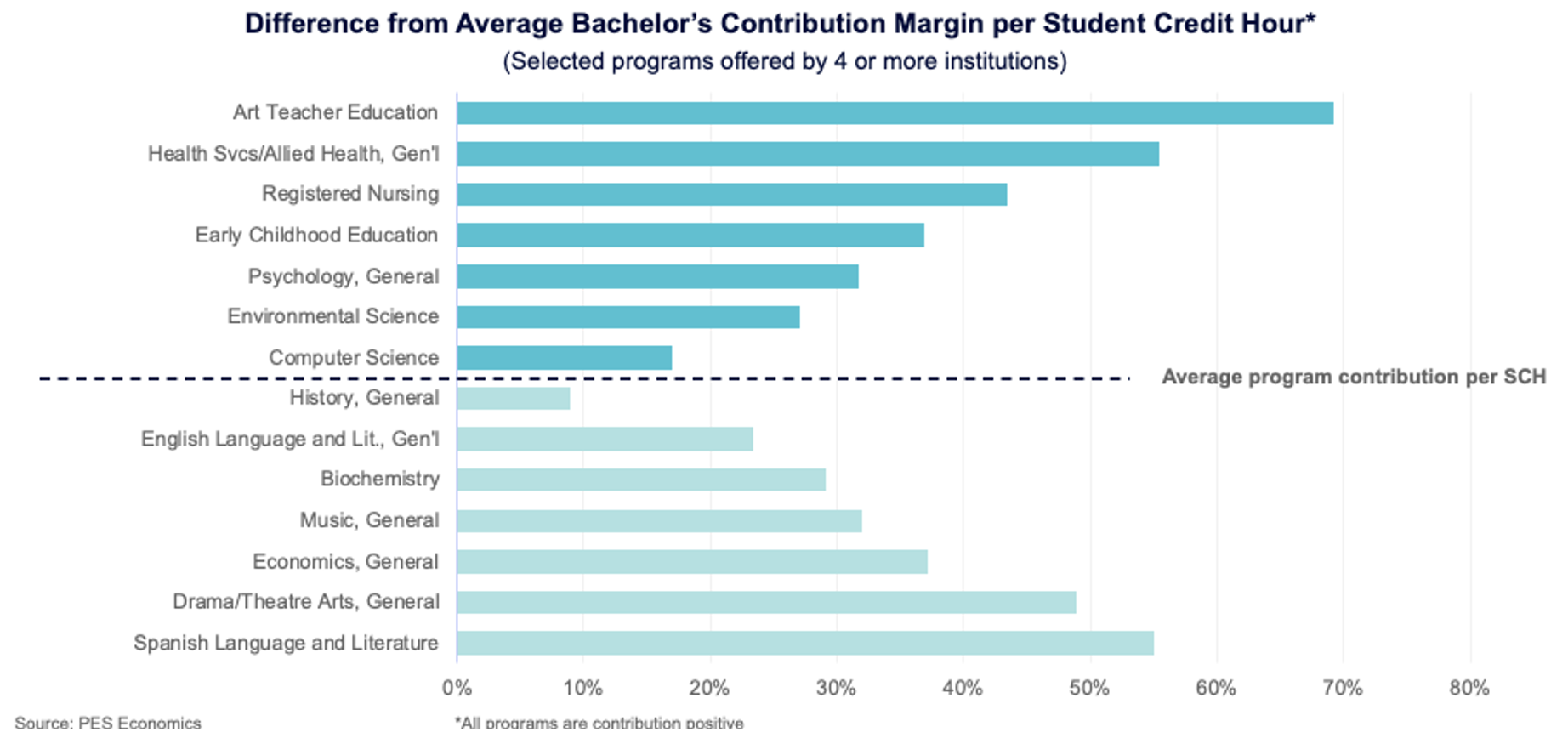If you are looking outward to understand the markets for your academic programs, including student demand, employer needs, and competition, you are halfway there – and well ahead of many institutions that use little data or focus solely on employer demand for graduates. To complete a sound program evaluation, you also need to look inward at program economics and academic outcomes.
Markets Face Outward, Economics–Inward
Let’s avoid two common errors: focusing only on cost and confusing program margin with departmental margin.
First, many high-cost programs also have high margins. They may have lower tuition discounts (because of the type of student they attract), or a more efficient course structure that leads to a higher number of students per class – in effect the volume of students per class offsets the cost per class, leading to a lower cost per student credit hour delivered. So, cost, by itself, tells you very little about which courses or programs are generating or consuming margins.
The second error is confusing departmental and program economics. Nursing programs often highlight both errors. I have heard many colleges complain about the high cost of nursing “programs.” This conventional wisdom about Nursing reflects the costs of the Nursing department, which are often high because of clinical requirements, instructor pay, and regulatory constraints on class sizes. So, I have been surprised to see that nursing programs usually have above-average margins.
The departmental analysis needs to include high-margin courses that nurses take outside of their department, such as introductory English. Including the revenue cost and margin for the nurses in these courses substantially increases program margins. Accreditors require that all undergraduate nurses take essentially the same courses. As a result, average class sizes are quite healthy, which offsets the higher cost per course. Program economics avoids these errors and gives you an accurate understanding of program revenue, cost, and margin.

A sound program evaluation includes both a look outward toward market opportunity and inward toward program economics. Most programs make money, but knowing which ones have above-average margins and which are below will inform good decision-making.




